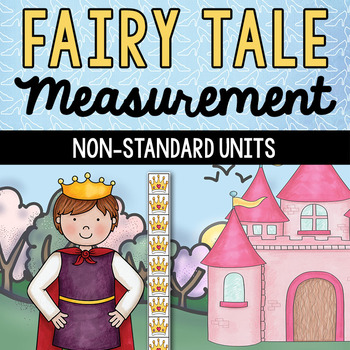Fairy Tale Measurement
- PDF
Also included in
- This is a money saving bundle of non-standard measurement activities. Get 11 packs for the price of 6! Print and laminate the measurement cards and themed non-standard rulers, and provide the recording sheets for your students to record their measuring. This can be done as a "measure the room" actPrice $11.50Original Price $21.45Save $9.95
Description
Practice non-standard measurement with this adorable Fairy Tale themed set.
Measurement (non-standard units) activity for your year round measurement needs or to accompany your Fairy Tale unit. Print and laminate the cards and themed non-standard rulers, and provide the recording sheets for your students to record their measuring. This can be done as a "measure the room" activity by posting the images around the room, or you can scatter them around on desks/tables and have students find them. Alternately, you can place them all in a bin and have students use it as a center.
Please note, for the purpose of this activity the relative sizes of the items may not be realistic.
I have also included a sheet for your students to measure items of their choosing from around the room using the crown ruler.
You can see other measurement products here:






